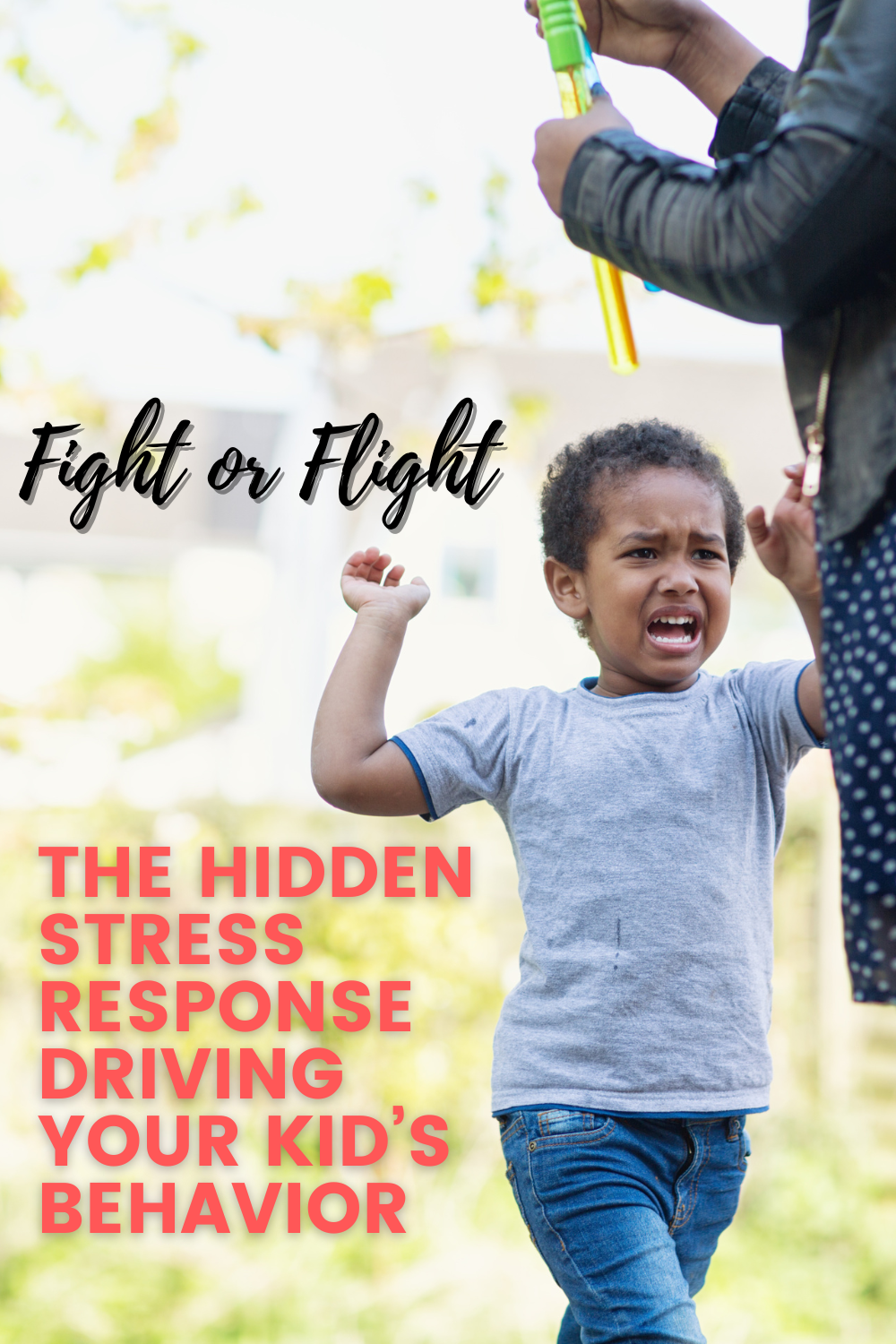I was in the kitchen, my mind trying to track 20 things to do, before company arrived for dinner.
My husband is super helpful (grateful), but when he asked me a simple question… I snapped at him.
Not something I’m proud of, but a situation that has unfolded more times than I’d like to admit… ALWAYS when I “have a lot in my head”.
Over the years I’ve often explained it to him (with an apology) as… “There is no rational thought, the sharp snappy tone is out of my mouth instantly.”
It sounds like a cop-out, an excuse.
I feel like a jerk.
And, while it’s not fair to him, about a year ago I FINALLY understood why this happens and have been able to make significant progress in managing my nervous system.
What I didn’t understand was that I wasn’t only flooded with anxiety and stretching my executive functioning skills, my brain…
…had moved into Fight or Flight.
You know the automatic response that has us either fighting or running for our lives. All activity moves into the amygdala and the thinking part of our brain is offline.
Even though my life wasn’t threatened, after having significant trauma in my childhood, my brain had forged a pathway that led me into this response very quickly whenever I felt a certain amount of stress.
Maybe you can personally relate, maybe not?
But, my point in this vulnerable share is that many of our uniquely wired ALSO have forged these quick pathways into fight or flight.
Trauma is one way that happens, but not the only. It also happens from overly sensitive sensory systems, retained reflexes, and a host of other challenges.
When a child has a full on meltdown or runs away from you dangerously they’re completely in a state of fight or flight.
But, we can also be in a blended state of fight or flight, and when that happens your kid may look bad, disrespectful, and super difficult.
If your child does any of these regularly, it’s important to consider that they may be in fight or flight:
- Talking Back or Arguing: Sometimes, arguing is a protective response when your child is trying to gain control in a situation that feels unpredictable, unsafe, or overwhelming.
- Controlling Behavior or Bossiness: That sense of control can feel regulating even if it’s not functional.
- Sudden Mood Swings: Small changes or surprises can cause the well worn pathway into fight or flight to be activated, because they don’t know what’s happening next.
What can we do when we see our kids being triggered into fight or flight??
#1: Not react or take it personally – so hard, but understanding this is what your kid is going through is HUGE.
#2: Check in with how their feeling:
- “Aww man, your lego set just broke, I bet that upset you?”
- “Our plans changed and that can feel really disappointing.”
- “He took your toy and nobody noticed, was that frustrating.”
Sometimes we get the emotion wrong, so it’s important to leave room for them to talk, respond, or correct what we guessed.
#3: Move through the emotion – The effects of fight or flight can be hard to move out of. Anxiety persists, and it can be a super uncomfortable feeling (I know!).
There are some body based movements that can help push this energy through the body, releasing like these:
- Wall pushes: press palms into the wall as hard as they can
- Shake it out: shake arms, legs, or whole body with rhythm and force
- Run: run in place, run outside, or race between two points
Getting More Help for Fight or Flight
These are great in-the-moment strategies but, I’m just scratching the surface, even with this longer email.
We give a lot of support in The Connection Hive to help parents (and you) through what is often the life-controlling effects of being in a blended state of fight or flight!
But, we also have an awesome kit that I created earlier this year, that has 7 quick podcast style audio lessons, and super helpful printables in The Meltdown Rescue Kit.
Click here to snag the Meltdown Rescue Kit!
From the bottom of my heart I hope this was helpful for you, if it was let me know and I’ll share more soon. There’s a lot more I could say about the personal work I’m doing, and polyvagal theory (the blended state of fight or flight).
It’s something we don’t talk about enough, and is an underlying aspect for so many kids (and adults).
Alisha Grogan is a licensed occupational therapist and founder of Your Kid’s Table. She has over 19 years experience with expertise in sensory processing and feeding development in babies, toddlers, and children. Alisha also has 3 boys of her own at home. Learn more about her here.
